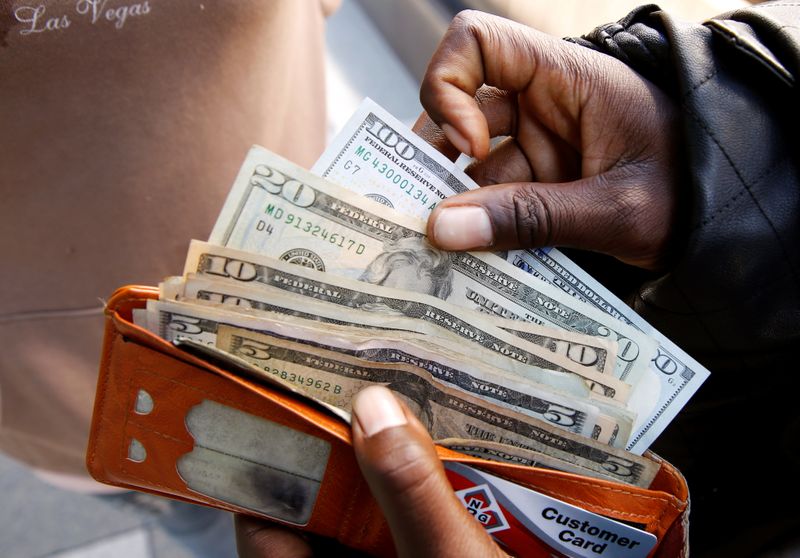By Stanley White and Sagarika Jaisinghani
TOKYO (Reuters) - The dollar hovered near three-month highs on Monday after the U.S. Senate passage of a bumper stimulus bill sparked another sell-off in the bond market, while currencies of major commodity exporters pulled back as a broader risk-on trade lost momentum.
The dollar index stood at 92.073 against a basket of six major currencies, up 0.17% and near its three-month high of 92.201 set on Friday.
The Senate passed a $1.9 trillion COVID-19 relief plan, a day after a stunning U.S. jobs report sent the greenback to its highest level since November 2020.
"The dollar is in demand as the United States is the most services-heavy economy globally, and once the reopening narrative goes in full swing, that will provide the icing on the cake," said Stephen Innes, chief global markets strategist at Axi.
While investors have increased bets on a faster economic rebound this year, concerns about higher inflation have pushed up bond yields despite assurances from central banks including the U.S. Federal Reserve that monetary policy will stay loose.
The yield on the benchmark U.S. 10-year Treasuries hovered near one-year highs on Monday, while U.S. Nasdaq futures fell about 1% and European stock index futures pared gains as the selloff also spread to other risk assets. [MKTS/GLOB]
Speculators cut their net short dollar positions in the latest week to $27.80 billion, which is the smallest short position since Dec. 15 and suggests that dollar bears are giving up on betting against the greenback. [IMM/FX]
The dollar held near a one-month high against the British pound, which traded at $1.3819, and a three-month high against the euro, which stood at $1.1904.
Against the low-yielding yen, the greenback held steady at 108.39 yen, having hit a nine-month high of 108.645 on Friday.
"More significant pushback from other central banks to their respective bond markets over the last week than the Fed provided has given reason for the dollar move to broaden out," Innes said.
China's yuan eased to a more-than-two-month low, with the bounce in the dollar and U.S. yields prompting many investors to re-evaluate forecasts for the yuan, which the market had expected to be stronger for the remainder of this year. [CNY/]
The Australian dollar rose 0.2% to $0.7696, but was well off its session high of $0.77230. The New Zealand dollar was down about 0.1% after earlier rising 0.4% to $0.719. The antipodean currencies have been in demand because of their links to the global commodities trade.
The U.S. currency fell 0.38% against the Norwegian crown to 8.5283 and eased slightly to 1.2637 Canadian dollars as traders bought the currencies of oil exporters.
Some traders said a jump in Brent crude futures above $70 a barrel for the first time in more than a year triggered a flurry of bids for commodity currencies at the start of Asian trading.
========================================================
Currency bid prices at 0430 GMT
Description RIC Last U.S. Close Pct Change YTD Pct High Bid Low Bid
Previous Change
Session
Euro/Dollar $1.1904 $1.1908 -0.05% -2.59% +1.1932 +1.1899
Dollar/Yen 108.3950 108.2600 +0.12% +4.93% +108.4850 +108.3450
Euro/Yen 129.03 129.09 -0.05% +1.66% +129.3900 +128.9800
Dollar/Swiss 0.9318 0.9311 +0.08% +5.33% +0.9319 +0.9299
Sterling/Dollar 1.3821 1.3831 -0.09% +1.15% +1.3864 +1.3810
Dollar/Canadian 1.2654 1.2649 +0.05% -0.62% +1.2663 +1.2624
Aussie/Dollar 0.7696 0.7680 +0.21% +0.05% +0.7722 +0.7686
NZ 0.7158 0.7165 -0.10% -0.32% +0.7190 +0.7152
Dollar/Dollar
All spots
Tokyo spots
Europe spots
Volatilities

Tokyo Forex market info from BOJ